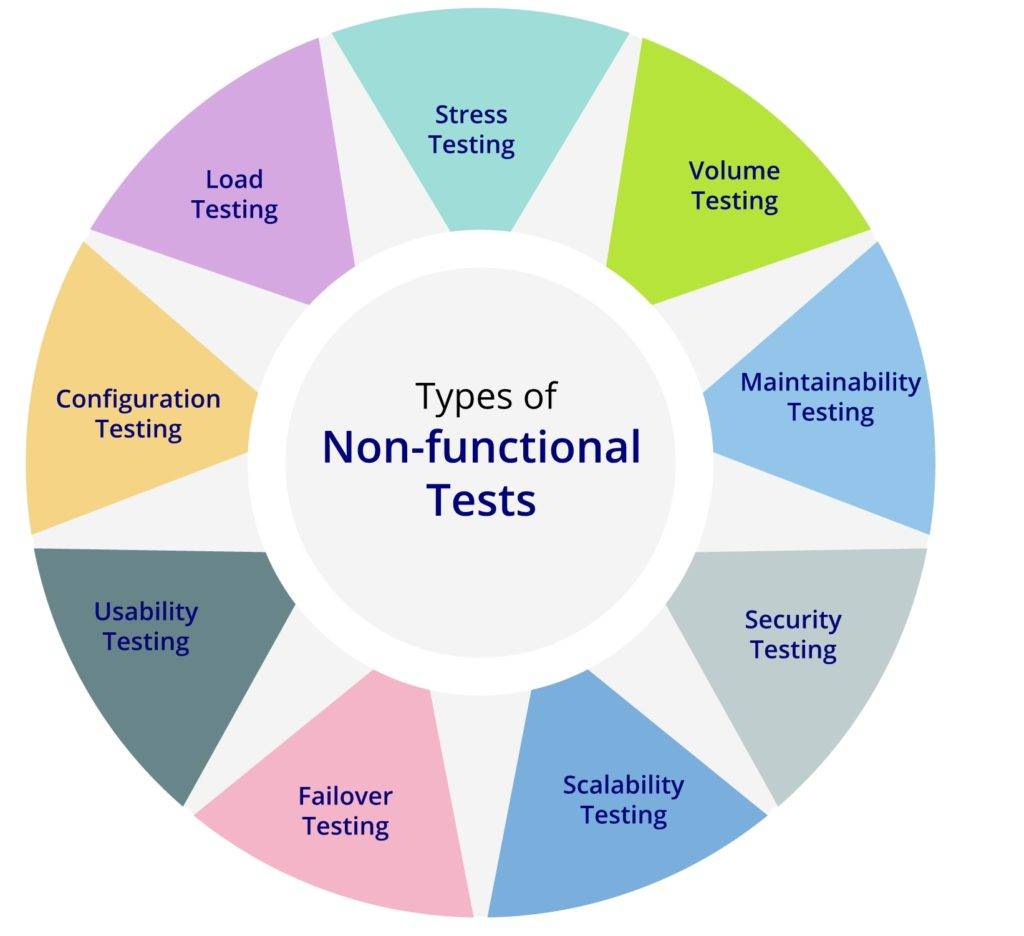- August 9, 2019
- Posted by: Pradeep Parthiban
- Category: Digital Assurance

What is non-functional testing? Objectives, Benefits and Types
Non-functional testing is done from a totally different perspective than functional testing. These types of software testing services are a means of quality control, which is performed in software applications to ensure that everything works well and to know in what circumstances they might fail.
Non-functional tests focus on validating a system or application through its non-functional requirements, that is, the way the system works and not through specific behaviors.
The non-functional characteristics of a system or application are often quantified on variable scales, such as response times in performance tests.
The ISTQB establishes that the omission of non-functional testing can cause potentially catastrophic quality problems after production, however, these types of tests are expensive, so risks must be assessed before committing project resources.
Non-functional testing helps us identify the risks a product foresees and tells us if it has poor performance in product or poor performance in production environments.
In a sense, these tests are done in order to obtain information. They allow explaining what the product supports and if it meets the expectations of the customers.
Objectives of non-functional testing
Its main objective is the verification of a requirement that specifies criteria that can be used to judge the operation of a system (non-functional requirements) such as availability, accessibility, usability, maintainability, security, performance. Other objectives are:
- Verify quality attributes which judge the operation of a system.
- Determine system compliance under certain conditions of use.
- Detect problems of product behavior by simulating real operating conditions.
Benefits of Non-functional Tests
Some of the benefits of non-functional tests are,
- Security of the product will be at a higher level.
- It improves the performance of the system.
- Improves user experience.
- It helps to establish if a new version is ready for production or not.
- It allows interested parties to know the actual performance compared to their expectations.
Types of non-functional tests:


1. Load testing
Load tests are a way of simulating demand on a software application and measuring the result. These tests are performed under expected demand and also in overload conditions (Spike testing).
To run these tests, the use of testing tools that simulate the load is required.
Load tests help identify the maximum operational capacity of an application, as well as in identifying bottlenecks and the causes of possible performance degradation.
When the test load rises above the expected parameters, these tests are known as stress tests.
2. Stress testing
They are load tests that are carried out with demands greater than the operational capacity, often until they reach the breaking point.
This type of software test is used to determine the stability of a system or application, with special attention to availability and error handling when faced with overload.
With stress tests, you can identify breakpoints, limits for safe use of the application, confirm design specifications, identify ways in which the system fails, among other aspects.
3. Configuration testing
Instead of testing the performance of an application from a load perspective, configuration tests are used to validate what performance effects certain configuration changes have to the application.
A typical example of this situation is to experiment with different load balancing methods and see the response of the application to similar levels of overload.
Another example is to verify if the system is able to function properly in different versions or configurations of hardware and software environments, such as various internet browsers, browser versions, among others.
4. Volume testing
The volume tests consist of validating the operation of the application with certain volumes of data.
The test subject is not limited to databases, it can also be used for example, to measure the performance of an interface when the interface file (a text file, XML, etc.) exceeds a certain size.
The objective is to see if given certain volumes of data the application works normally, what are the maximum limits of data volumes for the operation and identify fault conditions.
5. Usability testing
In usability tests, software testers focus on validating how easy an application is to use.
Features evaluated in usability include:
- Ease of learning: How easy it is for users to perform basic functions the first time they use the application.
- Efficiency: How quickly experienced users can perform their tasks.
- Memorization: How easy to memorize the use of the application, that is, when a user spends a lot of time without using the application, he can remember enough to use it effectively next time, or he/she has to start learning again.
- Errors: How many errors attributable to the design the user commits, how severe they are and how easy it is to recover from them.
- Satisfaction: How much the user likes (or dislikes) the system.
6. Security testing
It consists of testing the security attributes or characteristics of the system,
- Whether it is a secure system or not,
- If it can be violated,
- If there is access control through user accounts,
- If these accesses can be violated.
The security tests also serve to validate whether the software development team has followed recommended security practices in its programming.
Among the security features of a system are confidentiality, integrity, authentication, authorization and availability.
7. Scalability testing
The scalability tests consist of verifying the ability of an application to scale any of its non-functional characteristics, such as the load it supports, number of transactions, data volumes, among others.
When designing scalability test cases, it is advisable to consider them in incremental blocks, given the difficulty of predicting the actual load that an application will have after being implemented in production.
8. Failover testing
Recovery tests are performed to verify how fast and how well an application recovers after experiencing hardware or software failure.
Therefore, to perform recovery tests it is necessary to force the failure and then verify if the recovery occurs properly.
9. Maintainability testing
Basically, it evaluates how easy it is to perform the maintenance of a system or application.
This means how easy it is to analyze, change and test these changes.
To perform this test, the way in which the application is implemented must be evaluated, following good software engineering practices.
That is, that recommended software engineering patterns are being followed and that anti-patterns are not inadvertently being introduced, that is, that common programming errors are not being made.
Is Your Application Secure? We’re here to help. Talk to our experts Now
Inquire Now
To Conclude
Non-functional testing is a must and extremely important to ensure the quality of the software or application.
Since non-functional tests ensure the performance, dependability and security of the application are of the highest standard.
To conclude, quality assurance is not complete without performing non-functional tests.
At Indium Software, we follow a process-oriented approach to ensure your applications are error free without any performance issues.
To learn more about our performance testing services, write to us at sales@www.indiumsoftware.com




